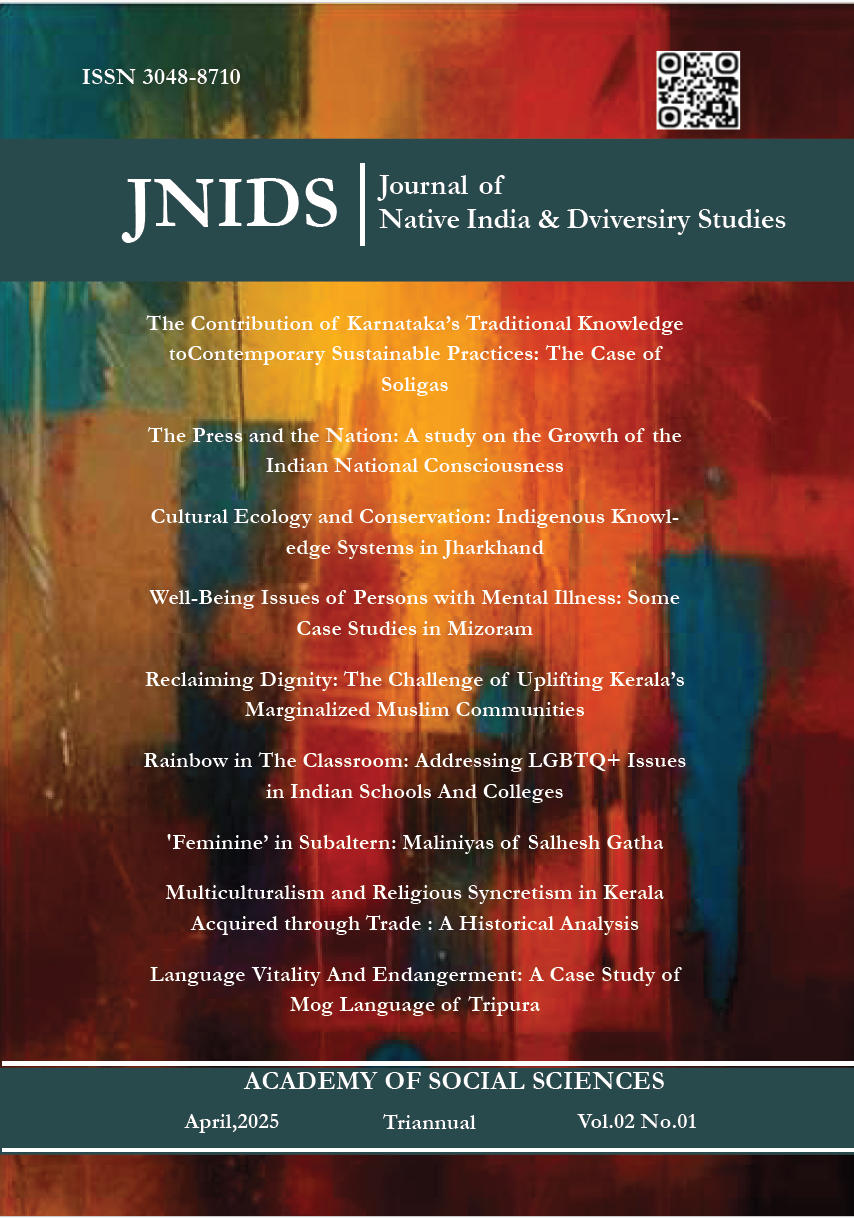Multiculturalism and Religious Syncretism in Kerala through Trade : A Historical Analysis
DOI:
https://doi.org/10.62656/Keywords:
Multiculturalism, Religious syncretism, Cultural assimilation, PluralismAbstract
This study evaluates the impact of trade and the advent of diverse religious traditions, especially heterodox religions and Semitic faiths like Judaism, Christianity, and Islam, on cultural diversity and religious syncretism of Kerala. It examines how these religions intersected with indigenous beliefs, resulting in novel hybrid forms of practice and cultural identities. Trade, colonialism, modern education, the role of social reformers, and social mobility are all examined in relation to multiculturalism and religious syncretism in Kerala. The study concludes by examining the possible reasons for multiculturalism and religious syncretism in Kerala.
References
1. M.G.S. Narayan, 4 th September, 2000, Nambudiris – Background and Early Settlements in Kerala, [Paper presentation], LIREC, Mount St. Thomas, Kochi, Kerala.
2. Muhammed, A. & Department of History, University of Calicut, Thenhipalam, Malappuram, Kerala. (2020, December). Environmental Epistemology, Legends, and Mythology: An introduction to the formation of Kerala culture. Heritage: Journal of Multidisciplinary
Studies in Archaeology (Vols. 8–1, pp. 761–774). Retrieved from http://www.heritageuniversityofkerala.com/JournalPDF/Volume8.1/43.pdf
3. Rajan, K. & Department of History, Government Victoria College, Palakkad, Kerala – 678 001, India. (2020, November). Deeply Enmeshed in Colonial Notions about Aryan Superiority: Revisiting the Kerala Histories on Brahman Settlements (journal-article). Heritage: Journal of Multidisciplinary Studies in Archaeology (Vols. 8–1, pp. 126–143). Retrieved from https://www.heritageuniversityofkerala.com/JournalPDF/Volume8.1/5.pdf
4. Suresh, J. & Department of History, University College, Thiruvananthapuram, Kerala. (2023). Epigraphic Insights into Medieval Kerala: Unveiling the Kulasekhara Era. Heritage: Journal of Multidisciplinary Studies in Archaeology (Vols. 11–1, pp. 902–913). Retrieved from https://www.heritageuniversityofkerala.com/JournalPDF/Volume11.1/52.pdf
5. Kunhali, V. (1975). ADVENT OF ISLAM IN KERALA : SPECIAL FEATURES.
Proceedings of the Indian History Congress, 36, 326–337. http://www.jstor.org/stable/44138858
6. J. J. Roy Burman. (1996). Hindu-Muslim Syncretism in India. Economic and Political Weekly, 31(20), 1211–1215. http://www.jstor.org/stable/4404148
7. Narayanan, M. G. S. (1996). Perumāḷs of Kerala: Brahmin Oligarchy and Ritual Monarchy (c. 800 A.D.-1124 A.D.), Current Books, Thrissur, Kerala.
8. Narayanan, M. G. S. (1972). Cultural symbiosis in Kerala. Trivandrum : Kerala Historical Society.
9. Veluthat, K. (1978). Brahman Settlements in Kerala: Historical Studies. [Calicut] : Sandhya Publications, Calicut University.
10. Alexander, P. C. (1949). Buddhism in Kerala. Annamalai University,
https://archive.org/details/in.gov.ignca.2175
11. J, Suresh., A Fresh Look On Jainism In Kerala. pracyajournal Retrieved from https://pracyajournal.com/old/www.pracyajournal.com/article/105/12-1-25-294.pdf
12. Roman Coins Found in India, JRAS Oct. 1904, pp591637.(n.d.). Retrieved from https://penelope.uchicago.edu/Thayer/E/Journals/RAsiaSoc/1904/October/Roman_Coins_Found_in_India*.html#:~:text=The%20First%20Period,Greece%20rather%20than%20to%20Rome

